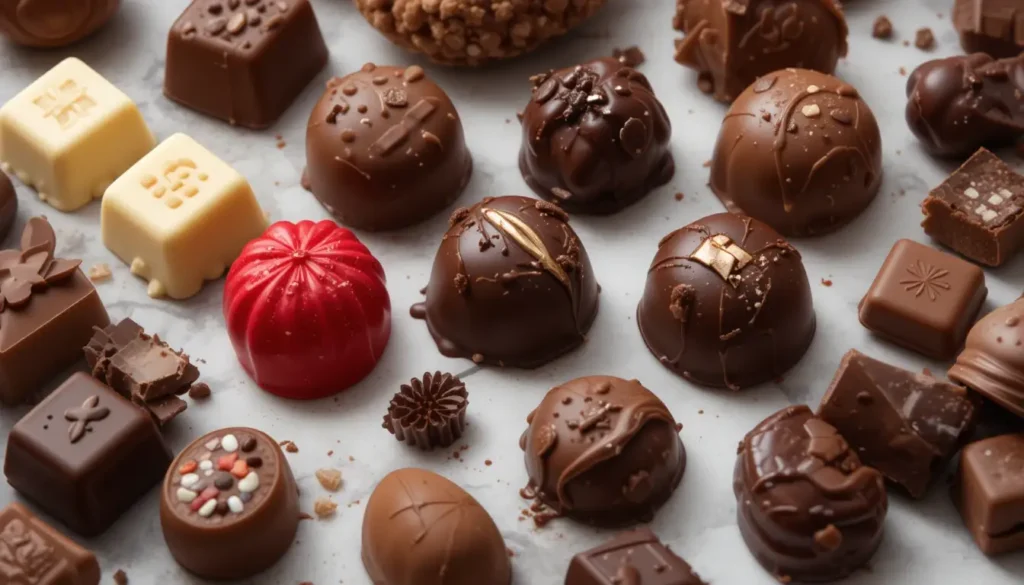Chocolate is loved worldwide, going beyond cultures and generations. Whether it’s a dark chocolate bar, milk chocolate truffle, or a hot chocolate drink, its appeal is undeniable. But determining which country produces the best quality chocolate in the world isn’t simple.
The quality of chocolate depends on factors like the origin of cacao beans, forming methods, and the skill of chocolatiers. Over time, some countries have earned a reputation for producing exceptional chocolate, refining their techniques and recipes.
In this article, we’ll explore what makes chocolate quality stand out, look at the top chocolate-producing countries, and answer the question: which country makes the best chocolate in the world?
Table of Contents
The Origins of Chocolate and Its Global Influence
A Brief History of Chocolate Production
Chocolate has its origins in ancient civilizations, particularly in Central and South America, where the cacao tree is native. The Olmecs were likely the first to cultivate cacao around 1500 BCE, but it was the Maya and Aztecs who truly transformed chocolate. They brewed a bitter drink from ground cacao beans, mixed with spices, and believed it was a gift from the gods. The Aztecs even used cacao beans as currency.
Chocolate reached Europe after the Spanish conquest in the 16th century, where it was sweetened and flavored, gaining popularity among royalty and the wealthy. By the 19th century, innovations like conching by Rodolphe Lindt and solid chocolate by Joseph Fry helped make chocolate more widely available.
The Evolution of Chocolate Around the World
Chocolate has its origins in ancient civilizations, particularly in Central and South America, where the cacao tree is native. The Olmecs were likely the first to cultivate cacao around 1500 BCE, but it was the Maya and Aztecs who truly transformed chocolate. They brewed a bitter drink from ground cacao beans, mixed with spices, and believed it was a gift from the gods. The Aztecs even used cacao beans as currency.
Chocolate came to Europe after the Spanish conquest in the 16th century, where it was sweetened and flavored, becoming popular with royalty and the wealthy. By the 19th century, innovations like conching by Rodolphe Lindt and solid chocolate by Joseph Fry made chocolate more widely available.
Factors That Define High-Quality Chocolate
What Makes Chocolate “High-Quality”?
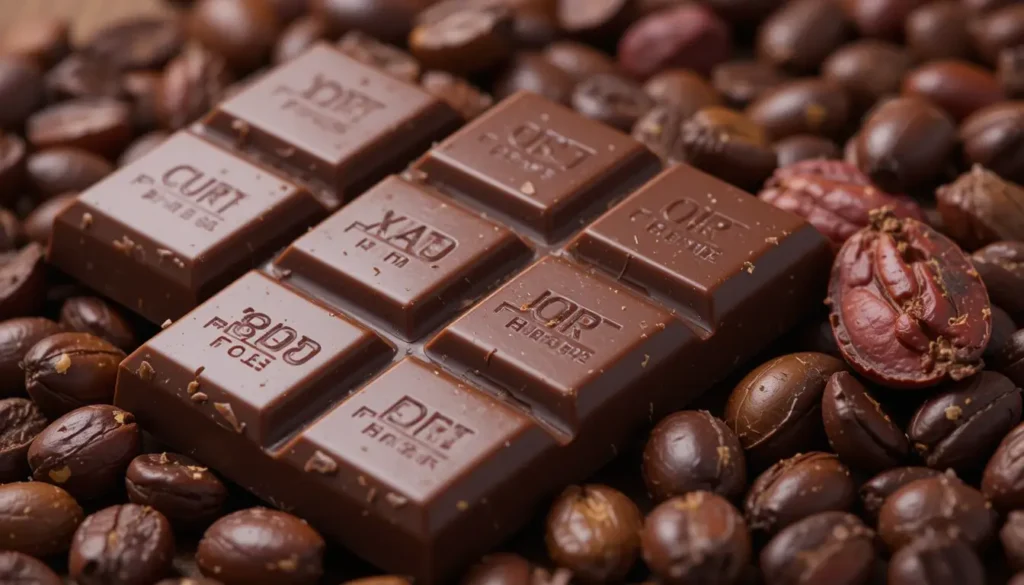
Several factors shape the quality of chocolate, including the origin of cacao beans, processing methods, and the chocolatier’s skill. High-quality chocolate should have a smooth texture, a balanced flavor, and a rich cocoa taste that isn’t overly sweet.
The quality of the cacao beans is the most important factor. Premium chocolate often uses beans with a high percentage of cocoa solids for a more intense flavor. Regions like Venezuela and Ecuador are known for their superior beans.
Processing also matters, with methods like fermentation, roasting, and conching ensuring a smooth texture and rich flavor. The chocolatier’s craftsmanship ensures the right balance of flavors, combining cacao, sugar, and milk expertly.
Top Chocolate-Producing Countries
Now that we have an understanding of what makes chocolate high-quality, let’s take a look at the countries that are most renowned for producing the best chocolate in the world.
Switzerland: A Tradition of Perfection
Switzerland has long been considered the gold standard when it comes to chocolate. Known for its smooth, creamy milk chocolate, Switzerland revolutionized chocolate production with the invention of milk chocolate by Daniel Peter in 1875. Swiss chocolatiers, such as Lindt, Toblerone, and Nestlé, are global icons, and their chocolates are synonymous with quality.
Swiss chocolate is famous for its meticulous craftsmanship and high-quality ingredients. The Swiss take their chocolate making seriously, with many chocolatiers even making their own cocoa butter in-house. The country’s reputation for chocolate perfection stems from a tradition of innovation, including Rodolphe Lindt’s creation of the conching process, which produces the signature smooth texture.
Belgium: The Birthplace of Fine Chocolatiers
Belgium is another country with a rich history of chocolate making. Belgian chocolate is renowned for its pralines small, delicate chocolate shells filled with creamy ganache or other fillings. Belgian chocolatiers such as Godiva, Neuhaus, and Léonidas have been perfecting their craft for over a century. Belgium’s chocolate-making tradition is deeply rooted in quality, with strict regulations requiring chocolate to contain at least 35% cocoa solids.
Belgium is also known for its innovative chocolate techniques, including the use of single-origin cacao and the art of hand making chocolates. The country’s chocolates often feature a complex flavor profile, with a balance of sweetness and bitterness that appeals to a wide range of tastes.
Top Chocolate-Producing Countries (Continued)
France: A Blend of Innovation and Luxury
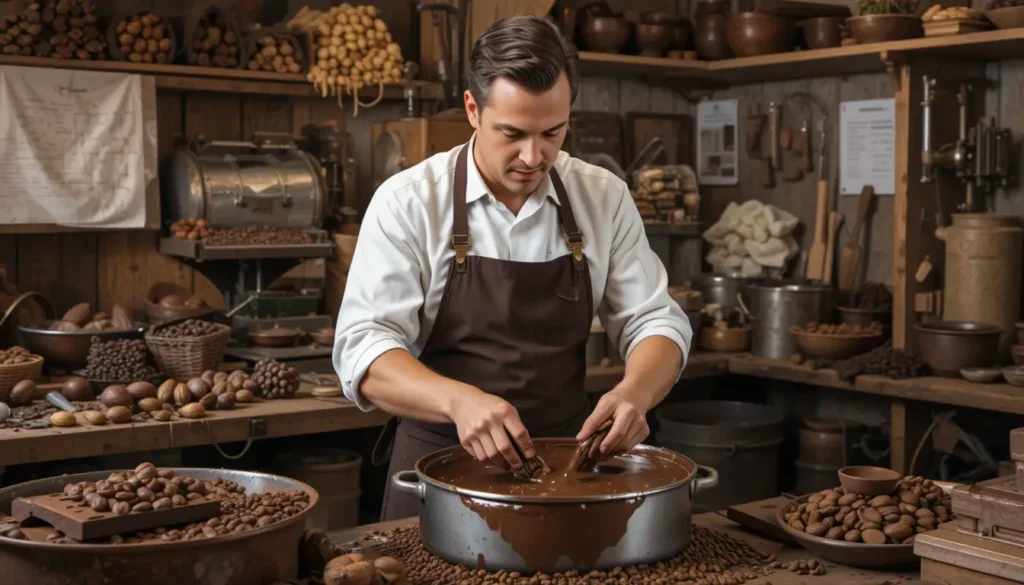
France is known for its luxury and refinement, and its chocolate reflects this tradition. While not a mass producer, French chocolate excels in artistry, blending innovation with age-old techniques. Renowned chocolatiers like Jean-Paul Hévin, Pierre Marcolini, and Valrhona focus on fine, single-origin cacao from regions like Venezuela, Madagascar, and Ecuador, creating chocolates with distinctive flavors.
French chocolates often feature creative fillings like ganaches and pralines, made with high quality ingredients. The French approach emphasizes not only flavor but also the visual appeal, with many chocolates designed as edible works of art.
Venezuela: The Land of Fine Cocoa Beans and Rich Flavors
Venezuela produces some of the finest cacao in the world, especially the Arriba Nacional variety. These beans offer floral, fruity, and nutty flavors, thanks to the ideal growing conditions in the country’s coastal regions.
Venezuelan cacao is prized by top chocolatiers for its balanced flavor, making it perfect for dark chocolate. Renowned brands like El Rey and Chuao focus on crafting high-quality chocolate using traditional methods to preserve the natural flavors of the beans. Venezuelan chocolate showcases how a country’s terroir influences the taste of chocolate.
The United States: Emerging as a Chocolate Powerhouse
While not traditionally a top chocolate producer, the U.S. chocolate industry has been rapidly evolving, with a focus on artisanal, small batch production. Companies like Mast Brothers, Dandelion Chocolate, and TCHO are gaining international recognition for their high quality, ethically sourced chocolates.
The rise of bean-to-bar production in the U.S. has helped drive this shift, with chocolatiers sourcing cacao directly from farmers in countries like Ecuador and Peru. This movement focuses on transparency, quality, and sustainability. American chocolatiers are also trying out unique flavor combinations, creating a wide variety of products to suit different tastes.
Comparing Chocolate Quality Across Countries
What Makes Swiss Chocolate Stand Out?
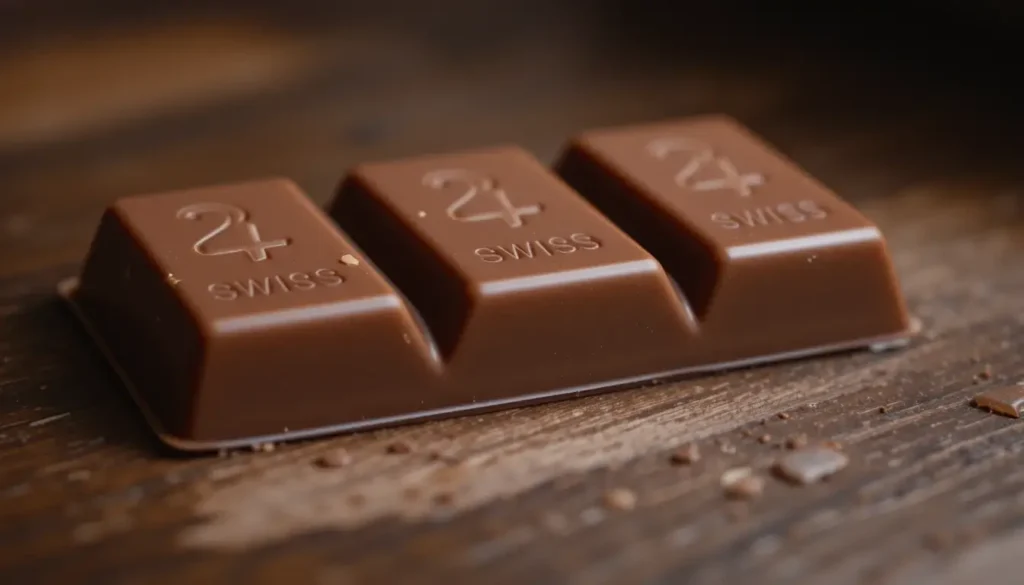
Swiss chocolate is renowned for its smooth, creamy texture and craftsmanship. In fact, Switzerland is a leader in chocolate making, known for innovations like milk chocolate. Furthermore, the country’s attention to detail, use of premium cocoa beans, and traditional conching technique all work together to create silky, well-balanced chocolate.
People prize Swiss milk chocolate for its smooth texture and subtle sweetness, with high quality milk enhancing its rich flavor. The consistency and quality of Swiss chocolate make it a staple in the world of fine chocolate.
The Belgian Influence: Why Belgian Chocolate is Globally Loved
People celebrate Belgian chocolate for its luxurious pralines, made with the finest ingredients and traditional techniques. With a rich history of chocolate making, Belgian chocolatiers emphasize quality, using premium cacao beans and unique fillings like ganache, caramel, and fruit.
Known for its smooth texture and rich flavor, Belgian chocolate must contain at least 35% cocoa solids, ensuring high standards. Handcrafted pralines, small chocolate pieces filled with exquisite ingredients, highlight Belgium’s dedication to flavor and craftsmanship, making it a favorite among chocolate lovers.
The Unique Appeal of French Chocolate and Its Rich Cultural Heritage
French chocolate is known for its skill, elegance, and unique flavors. Using high quality ingredients and single origin cacao, French chocolatiers create chocolates that reflect the special qualities of their regions.
Famous for their creativity, French chocolatiers often try out exotic flavors like lavender, chili, and sea salt. This mix of tradition and new ideas has made French chocolate one of the most respected in the world, offering a rich experience in the form of truffles, ganaches, and bars.
Venezuela’s Superior Cocoa Beans: Why They’re Valued by Gourmet Chocolatiers
Venezuelan cacao, particularly the Arriba Nacional variety, is famous for its rich, complex flavor, featuring fruity, floral, and nutty notes. The country’s ideal growing conditions and skilled farmers contribute to its fine texture and well-balanced flavor, making it a favorite among chocolatiers.
High-end brands often use Venezuelan cacao to create premium chocolates that highlight its unique characteristics, cementing Venezuela’s place as a key player in the global chocolate industry.
Growing Trends in the Chocolate Industry
Sustainability and Ethical Sourcing: A New Era for Chocolate
In recent years, the chocolate industry has placed more focus on sustainability and ethical sourcing, driven by consumer demand for transparency and environmental responsibility. Leading chocolate-producing countries, including Switzerland, Belgium, and the U.S., are adopting sustainable practices to tackle issues like deforestation and unfair labor.
Many chocolatiers are now working directly with cacao farmers in countries like Ghana, Peru, and Ecuador to ensure fair wages and sustainable farming. Initiatives such as Fairtrade certification guarantee safe working conditions and fair compensation for farmers.
The shift toward organic cacao farming is also gaining traction, supporting both the environment and a cleaner, more natural taste.
Bean-to-Bar Movement: Small-Batch Artisanal Chocolates
The bean to bar movement has transformed the chocolate industry, especially in the U.S., UK, and parts of Latin America. This method involves sourcing raw cacao directly from farmers, processing it in-house, and creating small batch, high-quality chocolates.
Bean-to-bar makers have more control over the production process, allowing them to craft chocolates with unique flavors that highlight the terroir of the cacao. Many focus on using minimal ingredients to emphasize the cacao’s natural taste.
In the U.S., companies like Dandelion Chocolate and TCHO are popularizing this artisanal approach, offering premium, traceable chocolates that appeal to discerning consumers.
The Role of Technology in Shaping Chocolate Production
Advancements in technology are changing chocolate production, making it more efficient and precise while improving flavor and texture. Modern roasting machines control temperature and humidity to roast beans perfectly, and new conching machines smooth the chocolate, making it creamier.
Technology also allows chocolatiers to experiment with new flavors and textures, using methods like molecular gastronomy. Data analytics helps producers understand what consumers prefer, letting them make chocolates that match specific tastes.
How to Identify the Best Quality Chocolate
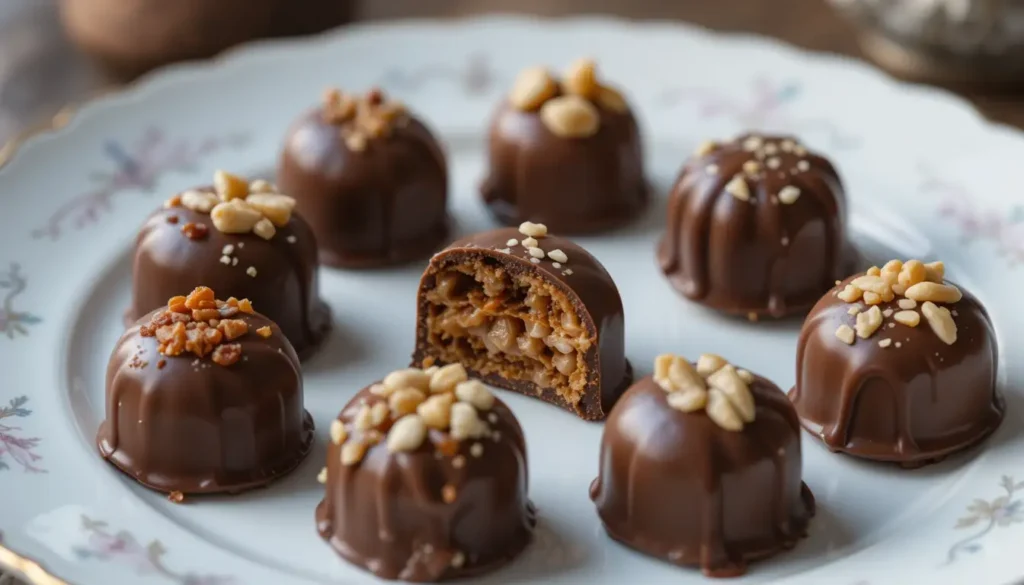
Key Factors That Determine High-Quality Chocolate
To appreciate the best chocolate, it’s important to consider several key factors that contribute to its quality:
- Cacao Content: Higher cacao content generally leads to richer, more intense flavors. Premium dark chocolates typically contain at least 70% cacao for a deep, less sweet taste.
- Cacao Origins: The region where cacao beans are grown influences the flavor. Single-origin chocolates have unique profiles that reflect their terroir, like those from Venezuela, Ecuador, or Madagascar.
- Processing Techniques: Traditional methods like conching and tempering help create smooth, balanced chocolate. Poor processing can result in a gritty or uneven texture.
- Ingredients: High-quality chocolate uses minimal, top tier ingredients like cacao, sugar, and cocoa butter, avoiding artificial additives that mask the cacao’s natural flavors.
- Texture and Mouthfeel: The best chocolate melts smoothly, with a silky mouthfeel that is a hallmark of luxury, resulting from the right balance of cocoa solids, sugar, and cocoa butter.
Tasting the Best Quality Chocolate: Tips for a True Chocolate Connoisseur
To fully experience the best chocolate, it’s essential to approach it with an open mind and an appreciation for its subtle nuances. Here are a few tips for tasting chocolate like a connoisseur:
- Examine the Appearance: A high-quality chocolate bar should have a glossy, smooth surface with a uniform color. Cracks or dullness may indicate poor tempering or subpar ingredients.
- Smell the Chocolate: Aroma is a crucial aspect of chocolate tasting. Take a deep breath and note the scents high-quality chocolate should have a complex aroma with hints of fruit, nuts, spices, or even floral notes, depending on the cacao’s origin.
- Break the Chocolate: Gently snap the chocolate in half. A clean, crisp break shows well tempered chocolate, while a dull snap signals improper processing.
- Taste the Chocolate: Let the chocolate melt slowly in your mouth, allowing the flavors to develop. Pay attention to the texture, the balance of sweetness and bitterness, and the overall mouthfeel. Great chocolate should have a long, lingering aftertaste that leaves a pleasant impression.
The Future of Chocolate: Trends to Watch
Sustainability and Ethical Sourcing at the Forefront
As consumer demand for ethical and sustainable products grows, the chocolate industry will likely adopt more fair labor practices, environmental responsibility, and social impact initiatives. In response, countries like Switzerland and Belgium are likely to champion traceable, fair trade certified cacao. Furthermore, they may use blockchain technology to ensure transparency in the supply chain.
With climate change affecting cacao farming, the focus will shift to developing cacao varieties that can withstand climate changes. Promoting agroforestry will also be important for improving sustainability and lowering the industry’s carbon footprint, ultimately ensuring the continued production of the best quality chocolate in the world.
Innovation in Flavors and Textures
The future of chocolate will include more experimentation with new flavors, ingredients, and textures. While classic combinations will still be popular, the craft chocolate movement is trying out bold new ideas. Look for exotic flavors like matcha, turmeric, and saffron paired with rare single origin cacao.
Texture will also be a big trend, with chocolatiers trying lighter, mousse like textures or bubbly, fizz infused chocolates. These changes aim to change the way we experience chocolate, offering exciting new options for adventurous tastes.
Discover how different countries, like Dubai, have distinct chocolate traditions in our post on Famous sweets in Dubai you must try.
Increased Consumer Knowledge and Demand for Quality
As consumers become more aware of chocolate quality, there is a growing demand for artisanal and craft chocolates instead of mass-produced ones. Countries like the U.S., UK, and Latin America are seeing a rise in small-batch, ethical bean-to-bar makers. As a result, consumers are now looking for chocolates with high cocoa content, fewer additives, and ethically sourced ingredients. Consequently, this trend is boosting global demand for the best quality chocolate in the world, which is leading to a greater focus on quality over quantity in the industry.
The Role of Technology in Shaping the Future of Chocolate
Improvements in food science and technology are making chocolate production better. New methods in fermentation, drying, and roasting are improving the flavor and quality of cacao. For example, testing different fermentation processes helps create more complex flavors, like wine. Roasting technology gives more control, bringing out the best flavor in cacao. Also, automation and AI are making production more efficient by handling tasks like sorting and quality checks. While technology helps with consistency, it can’t replace the skill and care of top chocolate makers.
Conclusion
Choosing the best quality chocolate depends on personal taste, as each country offers its own unique features.
Switzerland is known for its smooth, creamy milk chocolate made from high-quality cocoa beans and crafted with care, representing some of the best quality chocolate in the world. Similarly, Belgium is famous for its rich pralines, blending skill and luxury, making it a contender for the best quality chocolate in the world. Meanwhile, the U.S., UK, and Latin America are seeing a rise in small-batch, ethical bean-to-bar makers. In particular, the U.S. is becoming a leader in artisanal, bean-to-bar chocolate, known for its creativity and producing some of the best chocolate in the world.
In the end, the “best” chocolate is a matter of personal choice. Whether you prefer Swiss smoothness, Venezuelan richness, or French creativity, there are many great options to enjoy. The future of chocolate looks promising, with a focus on sustainability and innovation.

